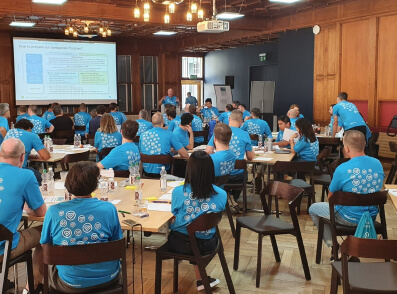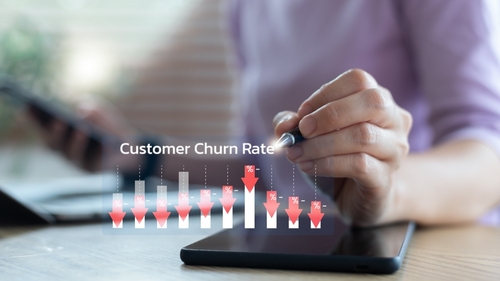The coronavirus pandemic is having a profound impact on the world’s health and economy. Those with compromised immune systems and significant risk factors have a higher likelihood of getting the virus and developing severe cases. As information emerges about this illness, we are learning more about some of these risk factors, one of which is obesity.
About Obesity
Obesity is an abnormal accumulation of excess fat on the body, which poses serious health risks and can cause a variety of chronic diseases. Obesity is typically measured by body mass index (BMI). The BMI is calculated by dividing your weight in kgs by your height, in meters squared. Any number above 30 is officially obese.
There are a variety of reasons why a person becomes obese. Although obesity is often caused by lifestyle factors, such as lack of physical activity, overeating or eating fatty and sugar-laden foods, other underlying issues could cause a person to become overweight and obese. One of those being hypothyroidism.
Obesity Worsens COVID-19 Outcomes
We now know that the novel coronavirus impacts the elderly and those with immunocompromised systems the hardest. But it can have a severe impact on those with obesity, as stated in the below graph by McKinsey & Company.

“In fact, obesity is the number one risk factor for developing a severe case of COVID-19 in people under the age of 55″, states Dr Stephens, at Houston Methodist.
It is not yet fully clear why obese individuals are more likely to contract the virus than those who are not obese. However, there are a few theories that support the statistics.
One approach is the fact that those who are obese have more have more difficulty breathing: “obesity has detrimental effects on lung function, diminishing forced expiratory volume and forced vital capacity”.
Also affecting the lungs, is the prevalence of obstructive sleep apnea amongst obese individuals, which is associated with decreased lung function and increased lung inflammation.
Another school of thought is that the molecular properties present in body fat are more prone to holding onto the viruslonger than other illnesses, making it more difficult to fight off.
And on the other hand, there are some studies who point at the immune system’s lack of response against the virus, as it is too busy trying to attack the excess fat tissue in the body: “obesity is characterized as a chronic sub-clinical inflammatory morbid entity which can impact the immune responses to infectious diseases through direct, indirect and epigenetic mechanisms.”
The Healthcare Burden
Healthcare can no longer be overlooked in economic growth discussions, with reports finding that, each year, poor health costs around “15 percent of global real GDP from premature deaths and lost productive potential among the working-age population.” – P. Dash et al.
Obesity, amongst other lifestyle-related chronic illnesses, is a tremendous burden to any healthcare system and government, especially during the coronavirus pandemic. Research shows that the current COVID-19 crisis will cost the global economy up to 8 percent of real GDP in 2020.
It is worth noting that obese individuals require more medical assistance, hospital admissions, 2.4 more prescriptions, in-patient treatments and specialty care visits; consequently draining the healthcare resources of most countries. This is especially important to understand when facing the fact that almost one in four people in OECD countries are obese. The number rises to almost 60% of the population when overweight people are also included.
So how exactly is obesity draining healthcare expenditures and resources? The below graph shows the projected expenditure costs for obesity between 2020 and 2050, per capita per year, for the most affected countries. Unsurprisingly, the US (with a 43% of prevalence of obesity) takes the biggest impact, having the largest levels of obesity, with an expected per capita expenditure on healthcare costs of almost $645 per year.

Obesity is expensive. “It is responsible for 70 percent of all treatment costs for diabetes, 23 percent of treatment costs for cardiovascular diseases and 9 percent for cancers. On average, treating diseases caused by excess weight costs 8.4 percent of total health spending in OECD nations.” – N. McCarthy, 2019.
Managing the Burden
It seems clear by now that a drastic change needs to happen. Not just for the sake of the individual’s health but for the survival of the world’s economy and the sustainability of healthcare systems worldwide.
Many countries have tried to tackle the obesity epidemic with healthcare initiatives, which include salt awareness campaigns, promotion of physical activity (PA) and healthy nutrition programmes; HEPA standing for “European network for the promotion of health-enhancing physical activity”. The WHO graph below, shows that around 70% of EU nations have implemented some obesity-tackling schemes.

Some of these initiatives have been registered in the WHO Nutrition, physical activity and the prevention of obesity report and are highlighted below:
- In France, for instance, a law has been introduced banning vending machines from schools.
- In France, Latvia, the Netherlands, Norway, and the United Kingdom an attempt is being made to provide fruit free of charge in schools or to make it easily accessible.
- In Cyprus, a programme for schools entitled Mediterranean Diet – Back to our Tradition, recently launched to teach children the principles of a healthy diet. Children cook for their parents and invite them to taste the Mediterranean diet.
- Finland aims to tackle its escalating child obesity rates by considering reintroducing taxes on soft drinks or lowering value added tax from 24% to 12% or even 7% on products that meet the criteria of the National Heart Association.
- Whereas Georgia aims to develop a food and nutrition policy for schools.
However, addressing and managing obesity is not delivering the results we expect. The World Economic Forum states the following in a 2019 article: “Despite initiatives to combat this phenomenon, the number of people leading unhealthy lifestyles is on the rise and obesity rates are growing.”
At dacadoo we provide tangible, proven solutions for health management. Through our white label version, we help thousands of our Digital Health Engagement Platform users effectively manage their weight, health, and lifestyle by providing digital coaching, health related goal setting, and tracking of physical exercise, nutrition, and mental wellbeing. We make health understandable and measurable with our patented Health Score, which changes in real time as an individual’s health progresses.
Our documented results prove that nearly two-thirds (64%) of active users improve their Health Score within 12 months of using the platform, as a result of:
- A better Lifestyle Score. 90% of the active users improved in this area, through: optimized nutrition, decreased smoking habits, higher rates of physical exercise and better sleep quality, amongst others.
- Enhanced Mind Score. 72% of the active users improved in this area, due to enhancements in: managing stress levels, capacity to focus, mental wellbeing and a positive outlook on life.
- A healthier Body Score. 41% of the active users experienced: improvements in heart rate and blood pressure values, a better BMI (weight management) and fat percentage.
Our solutions are of key importance to the corporate health, reinsurers, life & health insurers, and other healthcare industries. Do not hesitate to request a demo to learn how we can help your business achieve a healthier workforce and client base or a more accurate underwriting process.




















